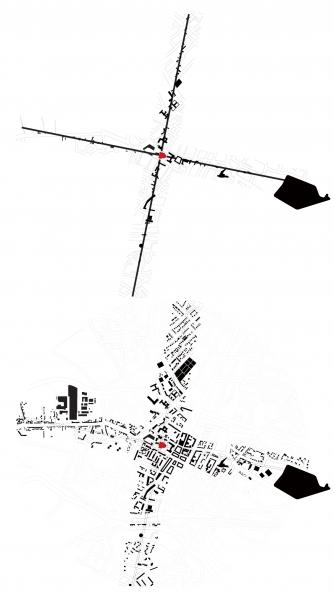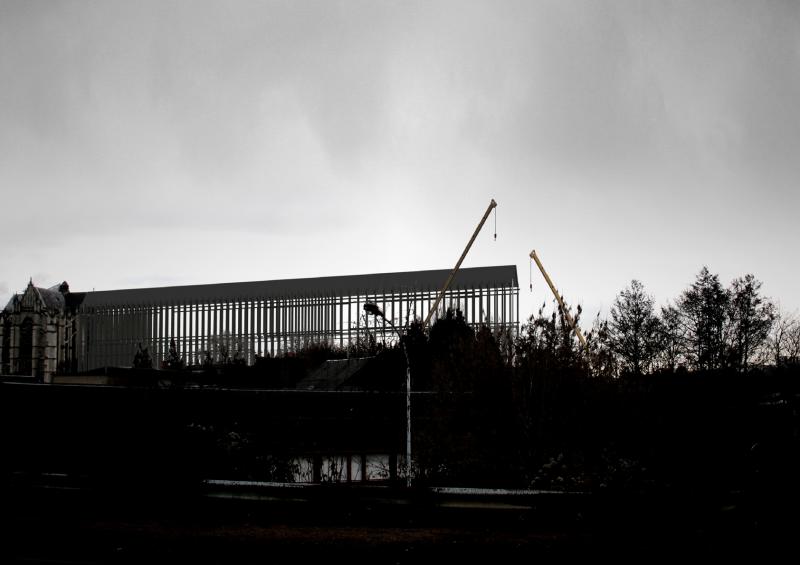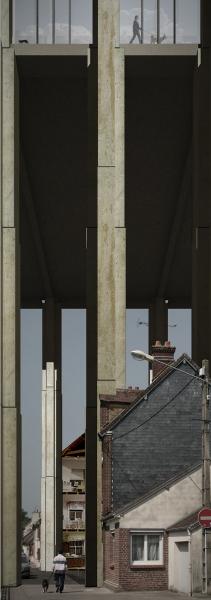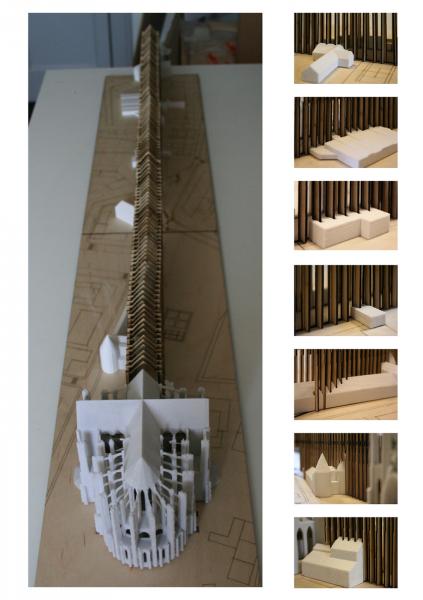








Gothic Cathedrals have a strict norm of design that is set by the religious symbolism of cruciform and spires. They are at the same time a civic center for activities and the scale of the architecture symbolizes a center of the town. They were often inserted into the fabric of the city and built on older Romanesque structures. For instance, Beauvais Cathedral was built on the ruin of an existing altar of a smaller basilica. During the course of the constructions the context, the small Romanesque Bassie Ourve, was eroded graduately. Part of the half-finished wall of the first bay of the nave ‘melted’ into the interior of the church and created peculiar spaces.
In Gothic cosmology they believe that they are in a downslide following the fall of Roman Empire and the end-of-world is soon to come. The sculptures on the portals of the cathedrals always portrait the Biblical stories of Apocalypse and Judgment Day. (Usually the south portal since it is the brighter side lighted by the southern sun and that represented the brighter New Testament of the Bible.
That is why the constructions of cathedrals always span across generations. Perhaps they were never meant to be finished. The Cologne Cathedral took over 600 years (1248-1880) to finish. The labor and the time is a sacrifice to God and the constructions of the cathedrals. Therefore all cathedrals are, in theory, in an unfinished status. They are like history books that keep on adding new chapters.
To complete the story of Beauvais Cathedral is to add another chapter (or chapters) to the perpetual history book. What if we complete our cathedral by finishing the nave? And what if we don’t stop at the west façade and continue with constructions? What if we build a never-ending nave for Beauvais and continue its ‘unfinished’ status
It becomes a beast that follows its own logic, rather than the city’s logic. It engulfs or wind between secular buildings and chooses which ones to become part of its own, creating absurd spaces around, or even inside, the existing context. I force-feed the town with the completion to enforced the revision the use of those spaces, buildings and eventually the city. It will slowly and gently change the city.